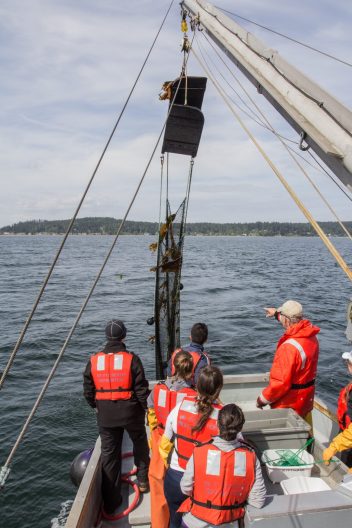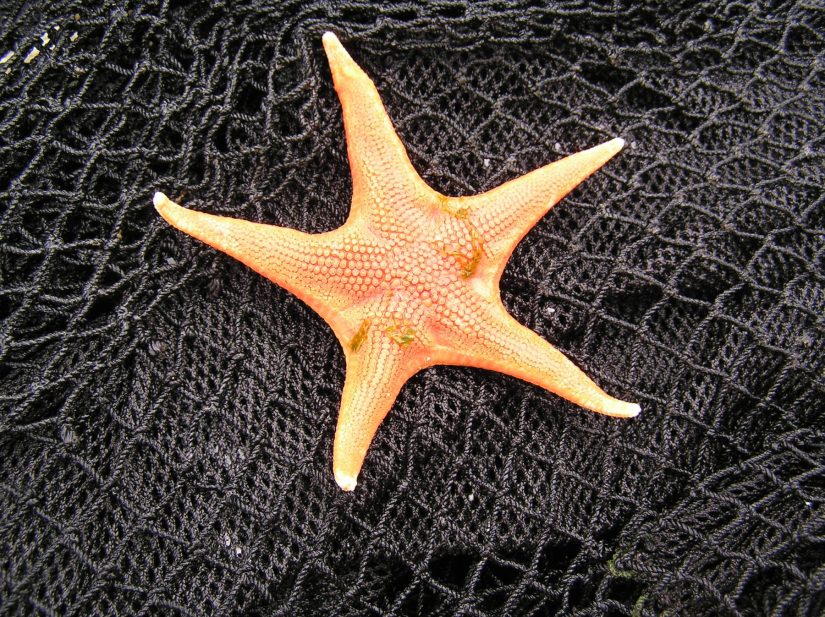Two decades of change in sea star abundance in Puget Sound
Since 1991, students and faculty at UW’s School of Aquatic and Fishery Sciences have conducted bottom trawl surveys in Port Madison through the School’s Fisheries Ecology course, creating an experiential learning opportunity for students and collecting valuable long-term data on physical and ecological change at a subtidal site in Puget Sound. Fortuitously, this long-term sampling gave students the data needed to investigate an unprecedented mass mortality event. 
Intertidal and subtidal ecosystems across North America’s west coast were impacted by the 2013-2015 sea star wasting disease (SSWD) epizootic. Leveraging two decades of data from the Port Madison trawl surveys, their analysis of long-term sea star abundance trends revealed stark declines in species known to be most susceptible to SSWD, coincident with the epizootic’s 2013-14 onset in Washington State. Their results also suggest that sea stars known to be less susceptible to SSWD faced previously unreported declines throughout the study period (1997-2019), predating SSWD’s onset.
These findings not only inform ecologists’ understanding of sea star communities, but also demonstrate the value of long-term datasets in documenting historical ecosystem states in case of catastrophe and the involvement of undergraduate classes in the collection of the data.
